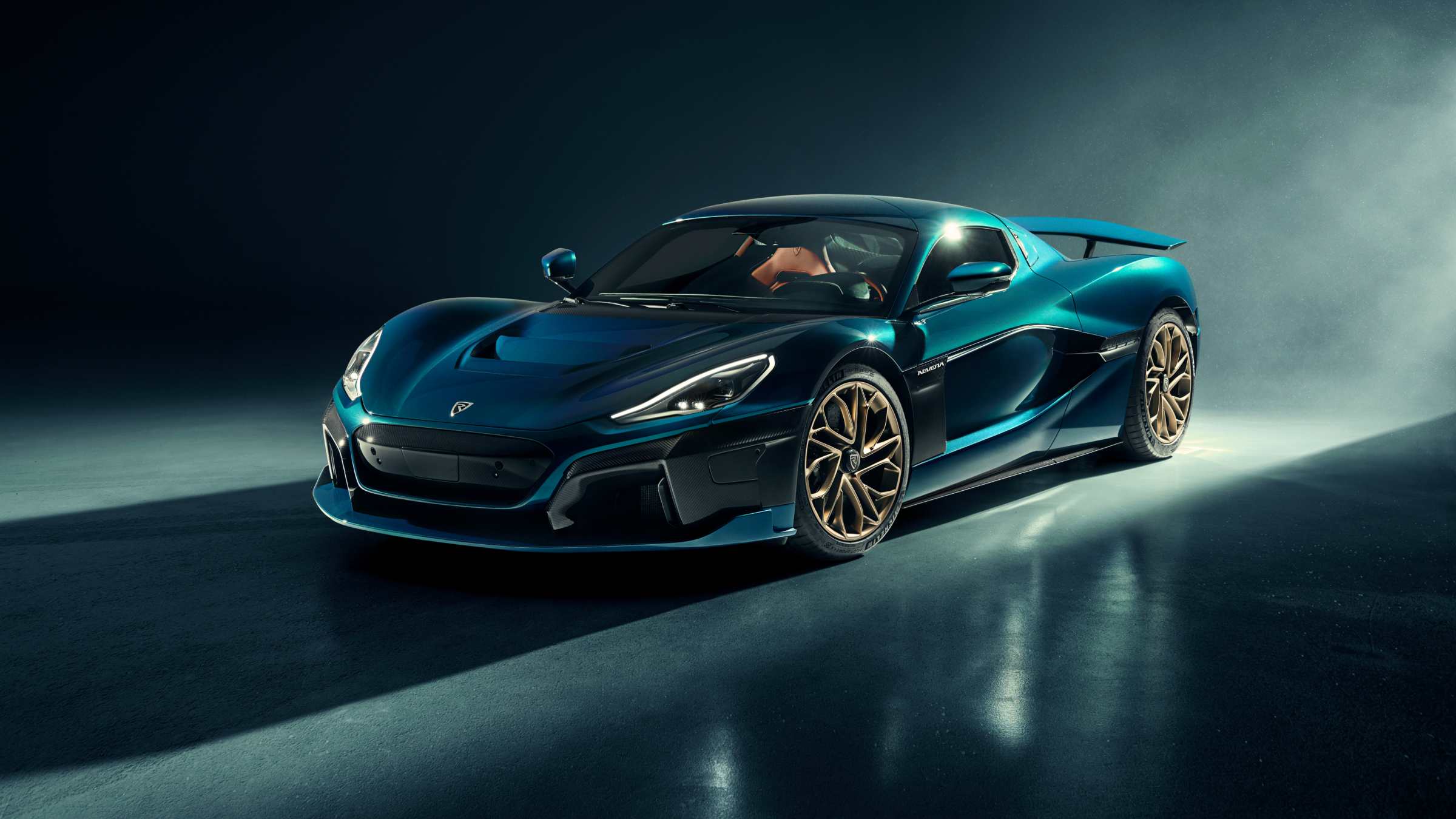The electric vehicle revolution has fundamentally transformed our understanding of automotive performance, particularly in the realm of torque delivery.
Unlike traditional internal combustion engines that must build RPM to access peak torque, electric motors offer the theoretical advantage of instant torque delivery from the moment power is applied.
However, the reality of EV performance is more nuanced than marketing materials suggest. While electric motors themselves can deliver torque instantaneously, the complete powertrain system including motor controllers, inverters, battery management systems, and software calibration can introduce varying degrees of response lag or enhancement.
Electric motors can deliver torque through controlled current pulses that occur hundreds of thousands of times per second, with lag typically measured in microseconds or milliseconds, yet real-world driving experiences vary significantly between different EV models.
Some vehicles deliver breathtaking, neck-snapping acceleration that lives up to the “instant torque” promise, while others exhibit noticeable hesitation, throttle lag, or progressive power delivery that can feel surprisingly conventional.
This comprehensive analysis examines ten electric vehicles representing the extremes of torque delivery characteristics. We’ll explore five EVs that exemplify exceptional torque delivery vehicles that harness the full potential of electric propulsion to deliver immediate, overwhelming thrust.
Conversely, we’ll examine five EVs that, despite their electric powertrains, exhibit noticeable lag, hesitation, or subdued torque delivery that may disappoint drivers expecting typical EV responsiveness.
Understanding these differences is crucial for potential EV buyers, as torque delivery characteristics significantly impact driving satisfaction, performance perception, and overall vehicle character.
The variations stem from diverse factors, including motor technology, inverter design, battery chemistry, thermal management, software calibration philosophy, and manufacturer priorities regarding efficiency, refinement, or performance.
5 EVs with Exceptional Torque Delivery
These exceptionally responsive electric vehicles feature high-performance motor controllers and precision-calibrated power delivery systems that provide instantaneous maximum torque through years of exhilarating acceleration across diverse driving conditions and battery charge levels.
Their thoughtful engineering includes advanced inverter technology, optimized motor windings, and sophisticated thermal management systems that resist the power limitations typically created by temperature extremes or sustained high-performance driving demands.
From stoplight launches that deliver face-melting acceleration to highway merging scenarios where immediate power matters, these remarkable electric drivetrains continue providing seamless torque delivery without developing response delays or power reduction issues throughout their operational lifespan.
Owners report addictive driving experiences with these instant-torque powertrains a performance enhancing quality feature that proves its worth through consistent acceleration responsiveness and maintained power output throughout various driving scenarios.
1. Rimac Nevera
The Rimac Nevera stands as the absolute pinnacle of electric vehicle torque delivery, representing what happens when Croatian engineering excellence meets unlimited ambition.
This hypercar doesn’t just deliver torque, it unleashes a seismic force that redefines the very concept of acceleration. With four independently controlled electric motors producing a combined 1,408 horsepower and 1,740 Nm (1,283 lb-ft) of torque, the Nevera delivers power with surgical precision and devastating effectiveness.
What sets the Nevera apart isn’t merely its astronomical torque figure, but the sophisticated manner in which this power is delivered. Each wheel receives its dedicated motor, allowing for torque vectoring that borders on the supernatural.
The advanced control systems can modulate power delivery to each wheel thousands of times per second, ensuring optimal traction and stability even as the vehicle accelerates from 0-60 mph in just 1.85 seconds. This isn’t just fast, it’s fast enough to compress your chest and blur your vision.
The Nevera’s torque delivery system represents the apex of current EV technology. The motor controllers utilize silicon carbide semiconductors that switch faster and more efficiently than traditional silicon-based units, reducing any potential delay in power transmission.
The 120 kWh battery pack, comprised of 6,960 individual cells, can discharge massive amounts of current instantaneously without voltage sag, ensuring consistent torque delivery regardless of state of charge.
The vehicle’s sophisticated traction control system works in harmony with the torque delivery, using predictive algorithms that anticipate wheel slip before it occurs.
This means the full torque can be applied more aggressively and maintained longer than in conventional systems. The result is acceleration that feels less like driving and more like being launched from a catapult.
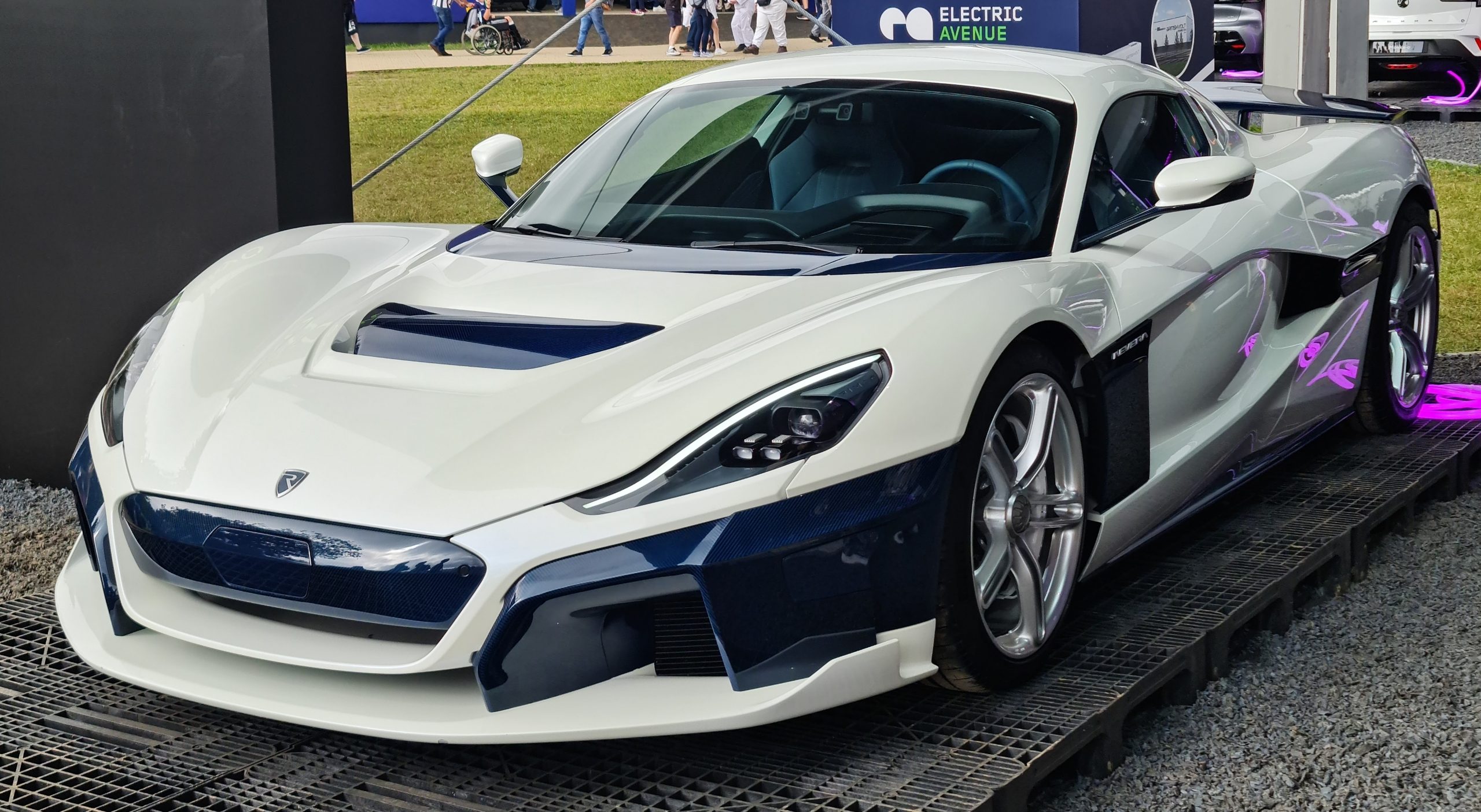
Temperature management plays a crucial role in the Nevera’s consistent torque delivery. Advanced liquid cooling systems maintain optimal operating temperatures for both motors and batteries, preventing the thermal limiting that plagues many high-performance EVs during sustained performance driving.
This means the Nevera can deliver its full torque potential repeatedly without degradation. The psychological impact of the Nevera’s torque delivery cannot be overstated.
The instantaneous availability of maximum torque from zero RPM creates an acceleration experience that’s fundamentally different from any internal combustion engine.
There’s no waiting for turbo lag, no need to find the power band, just immediate, overwhelming thrust that pushes passengers deep into their seats and challenges the limits of human perception.
The Nevera’s torque delivery also benefits from its advanced all-wheel-drive system, which can seamlessly transfer power between wheels based on real-time traction conditions.
This system operates so quickly that it can respond to changing conditions faster than human reflexes, maintaining optimal grip and acceleration even on challenging surfaces. For those fortunate enough to experience the Nevera, the torque delivery becomes the defining characteristic of the driving experience.
It’s not just transportation, it’s a demonstration of what’s possible when electric propulsion technology is pushed to its absolute limits. The Nevera proves that electric vehicles haven’t just matched internal combustion engines; they’ve obliterated the performance benchmarks.
2. Tesla Model S Plaid
The Tesla Model S Plaid represents the democratization of hypercar-level torque delivery, bringing previously unimaginable performance to a production sedan.
With its tri-motor setup producing 1,020 horsepower and over 1,000 lb-ft of torque, the Model S Plaid delivers acceleration that was once reserved for million-dollar supercars.
The achievement becomes even more remarkable considering this is a family sedan with seating for five and a substantial cargo area. Tesla’s approach to torque delivery in the Model S Plaid emphasizes both raw power and sophisticated control.
The front motor handles standard driving duties while the dual rear motors engage during acceleration, creating a seamless power delivery that feels both immediate and controlled. The torque doesn’t hit like a hammer; it builds like a tidal wave, starting instantly but growing in intensity as the motors reach their optimal operating range.
The Model S Plaid’s torque delivery benefits from Tesla’s years of electric powertrain refinement. The motor controllers have been optimized through countless over-the-air updates, fine-tuning the power delivery characteristics based on real-world driving data from millions of Tesla vehicles.
This continuous improvement means the torque delivery becomes more refined and responsive over time, unlike traditional vehicles that remain static after production. One of the most impressive aspects of the Model S Plaid’s torque delivery is its consistency across different driving conditions.
Whether launching from a standstill at a drag strip or merging onto a highway at 70 mph, the available torque remains substantial and immediately accessible. This broad powerband eliminates the traditional concept of “getting into the power” that characterizes internal combustion engines.
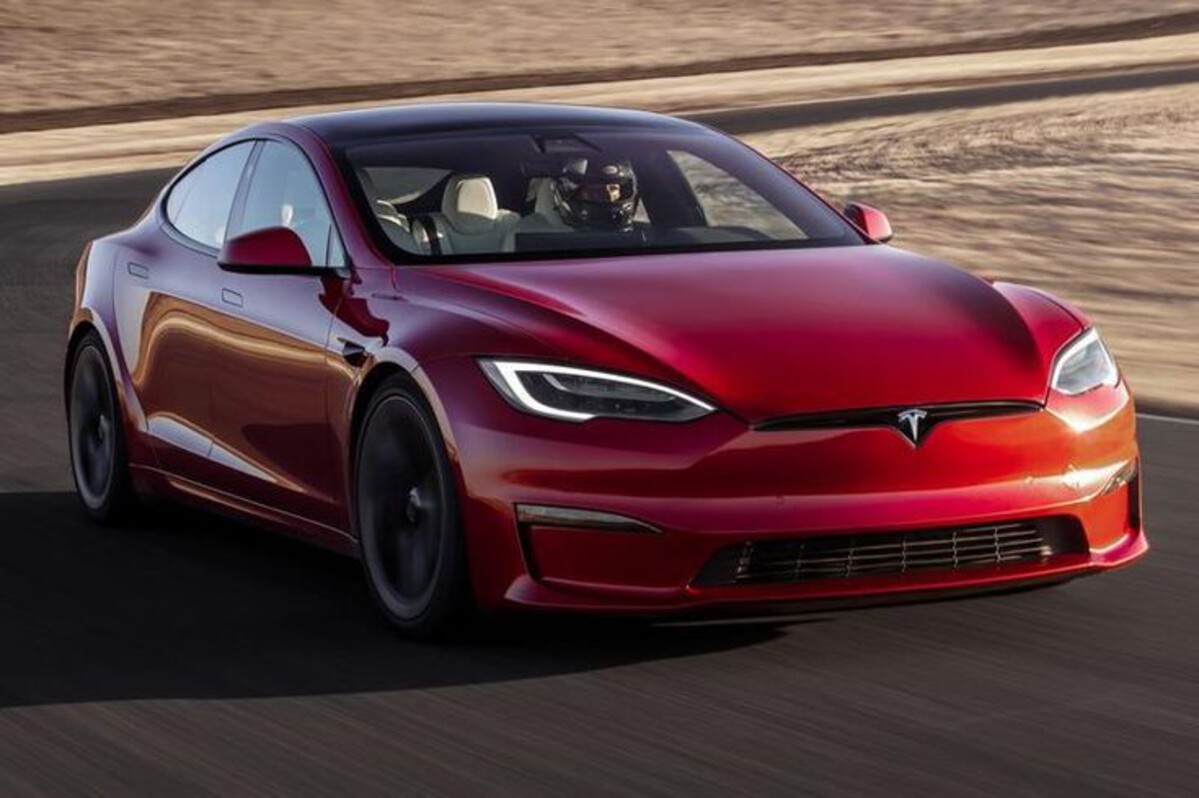
The battery technology in the Model S Plaid plays a crucial role in its torque delivery capabilities. The 4680 battery cells can handle extreme discharge rates without significant voltage drop, ensuring that the motors receive consistent power even during maximum acceleration runs.
This prevents the power fade that affects many EVs during sustained high-performance driving. Tesla’s Track Mode further enhances the Model S Plaid’s torque delivery by adjusting the power distribution algorithms for optimal track performance.
In this mode, the torque vectoring becomes more aggressive, using the individual motors to help rotate the car through corners while maintaining maximum acceleration out of turns. The result is a torque delivery system that adapts to the driving environment.
The Model S Plaid’s torque delivery also benefits from its sophisticated thermal management system. Heat pumps and liquid cooling maintain optimal operating temperatures for the motors and batteries, preventing thermal limiting that can reduce torque output in extreme conditions.
This means the vehicle can deliver consistent performance during track sessions or repeated acceleration runs. The real-world impact of the Model S Plaid’s torque delivery extends beyond mere acceleration numbers.
The instant availability of power transforms everyday driving, making overtaking maneuvers effortless and providing a constant sense of capability.
The torque delivery creates confidence in the vehicle’s performance that encourages more engaged driving. Perhaps most importantly, the Model S Plaid proves that exceptional torque delivery doesn’t require exotic materials or astronomical prices.
By combining innovative engineering with production-scale manufacturing, Tesla has created a vehicle that delivers supercar-level torque performance at a fraction of the traditional cost, fundamentally changing expectations for electric vehicle performance.
3. Mercedes EQS AMG 53
The Mercedes EQS AMG 53 represents the pinnacle of sophisticated torque delivery, combining devastating performance with the refinement expected from a luxury flagship.
This isn’t just about raw power, it’s about delivering that power with the grace and composure that defines the Mercedes-AMG brand. With dual motors producing 649 horsepower and 950 Nm (701 lb-ft) of torque, the EQS AMG 53 accelerates from 0-60 mph in just 3.4 seconds while maintaining the serene composure of a luxury limousine.
What distinguishes the EQS AMG 53’s torque delivery is its calibration philosophy. Mercedes engineers have programmed the power delivery to feel both immediate and progressive, avoiding the jarring impact that can characterize less refined EVs.
The torque builds smoothly but inexorably, providing tremendous thrust without the harsh initial spike that can unsettle passengers or compromise comfort.
The AMG-specific tuning of the torque delivery includes multiple drive modes that fundamentally alter the power characteristics. In Comfort mode, the torque delivery is genteel and refined, perfect for luxury cruising.
Sport and Sport+ modes progressively sharpen the response, while the Race mode unleashes the full fury of the electric drivetrain. This versatility allows the EQS AMG 53 to transform from a refined executive transport to a performance machine at the touch of a button.
The sophisticated all-wheel-drive system in the EQS AMG 53 continuously varies torque distribution between the front and rear axles based on driving conditions and selected drive mode.
This system can send up to 100% of available torque to either axle, providing optimal traction and stability during acceleration while maintaining the characteristic Mercedes handling balance.
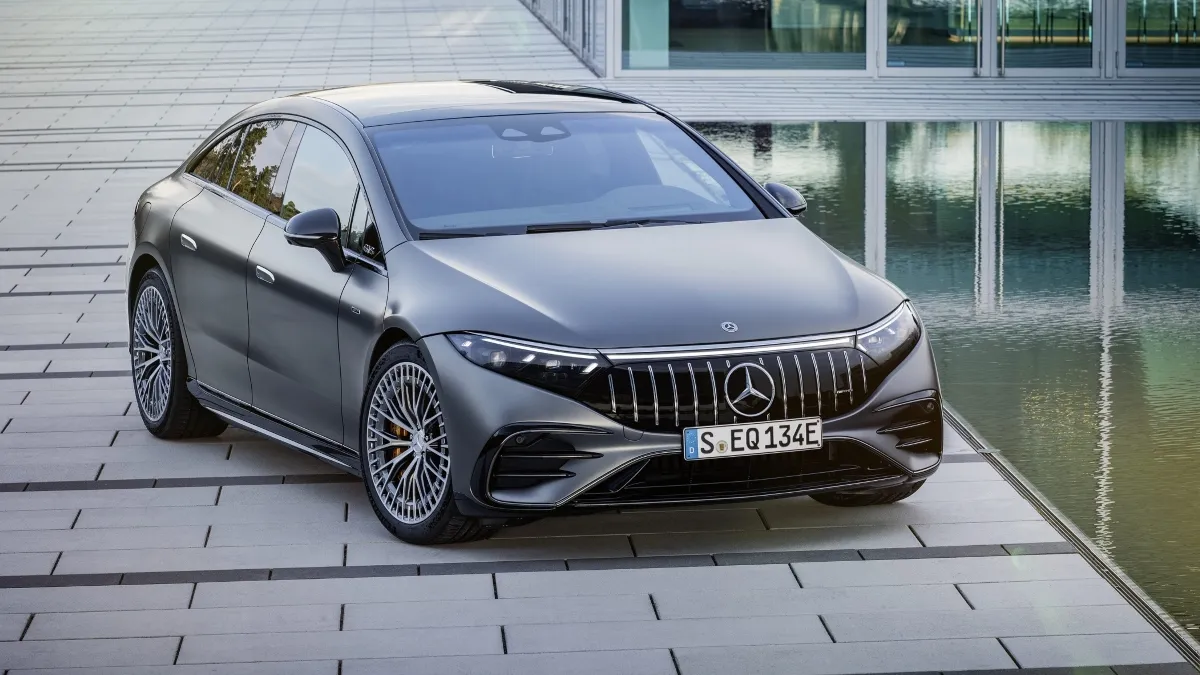
Mercedes has also implemented advanced torque vectoring through the AMG Dynamic Select system, which works in conjunction with the air suspension and adaptive dampers.
This integration means the torque delivery is coordinated with suspension settings to optimize both performance and comfort. The result is acceleration that feels both powerful and controlled, never overwhelming the chassis or compromising ride quality.
The EQS AMG 53’s torque delivery benefits from Mercedes’ extensive experience in electric powertrain development. The motor controllers utilize advanced algorithms that predict driver intent and precondition the drivetrain for optimal response.
This predictive capability means the torque is available even before the driver fully depresses the accelerator, creating an almost telepathic connection between driver input and vehicle response.
The battery technology in the EQS AMG 53 uses the latest lithium-ion chemistry optimized for both performance and longevity. The 107.8 kWh pack can sustain high discharge rates repeatedly without degradation, ensuring consistent torque delivery throughout the battery’s life.
Advanced thermal management maintains optimal cell temperatures even during extended high-performance driving sessions. One of the most impressive aspects of the EQS AMG 53’s torque delivery is how it maintains the Mercedes character while delivering AMG performance.
The acceleration feels effortless rather than violent, powerful rather than harsh. This calibration philosophy makes the tremendous performance accessible to a broader range of drivers while still satisfying performance enthusiasts.
The integration of the torque delivery with the vehicle’s other systems creates a holistic performance experience. The active suspension works with the torque vectoring to minimize weight transfer during acceleration, while the advanced traction control system allows more aggressive torque application by predicting and preventing wheel slip before it occurs.
The EQS AMG 53 demonstrates that exceptional torque delivery doesn’t require compromising luxury or refinement. By combining advanced electric powertrain technology with Mercedes’ decades of luxury vehicle expertise, the result is a vehicle that delivers supercar performance with S-Class sophistication, redefining what’s possible in the luxury EV segment.
4. BMW iX M60
The BMW iX M60 exemplifies BMW’s unique approach to electric performance, delivering torque with the precision and character that defines the M division.
With dual motors producing 610 horsepower and 811 lb-ft of torque, the iX M60 accelerates from 0-60 mph in 3.6 seconds while maintaining the driving dynamics that make BMW vehicles distinctively engaging.
This isn’t just about straight-line performance; it’s about delivering torque in a way that enhances the complete driving experience. BMW’s philosophy with the iX M60’s torque delivery centers on creating an emotional connection between driver and machine.
The torque doesn’t just provide acceleration; it’s calibrated to deliver feedback and character that makes the driving experience more engaging. The power delivery has been tuned to provide subtle variations and nuances that create a more organic feel, avoiding the sometimes sterile sensation of other electric vehicles.
The M-specific tuning of the iX M60 includes adaptive torque mapping that adjusts power delivery based on driving style and conditions. The system learns from driver inputs and gradually adapts the torque characteristics to match individual preferences.
This personalization means the vehicle becomes more responsive and intuitive over time, creating a unique bond between driver and machine. The iX M60’s torque delivery benefits from BMW’s advanced eDrive technology, which includes sophisticated motor controllers that can modulate power delivery with incredible precision.
These controllers can adjust torque output hundreds of times per second, providing seamless power delivery that adapts instantly to changing traction conditions or driver inputs.
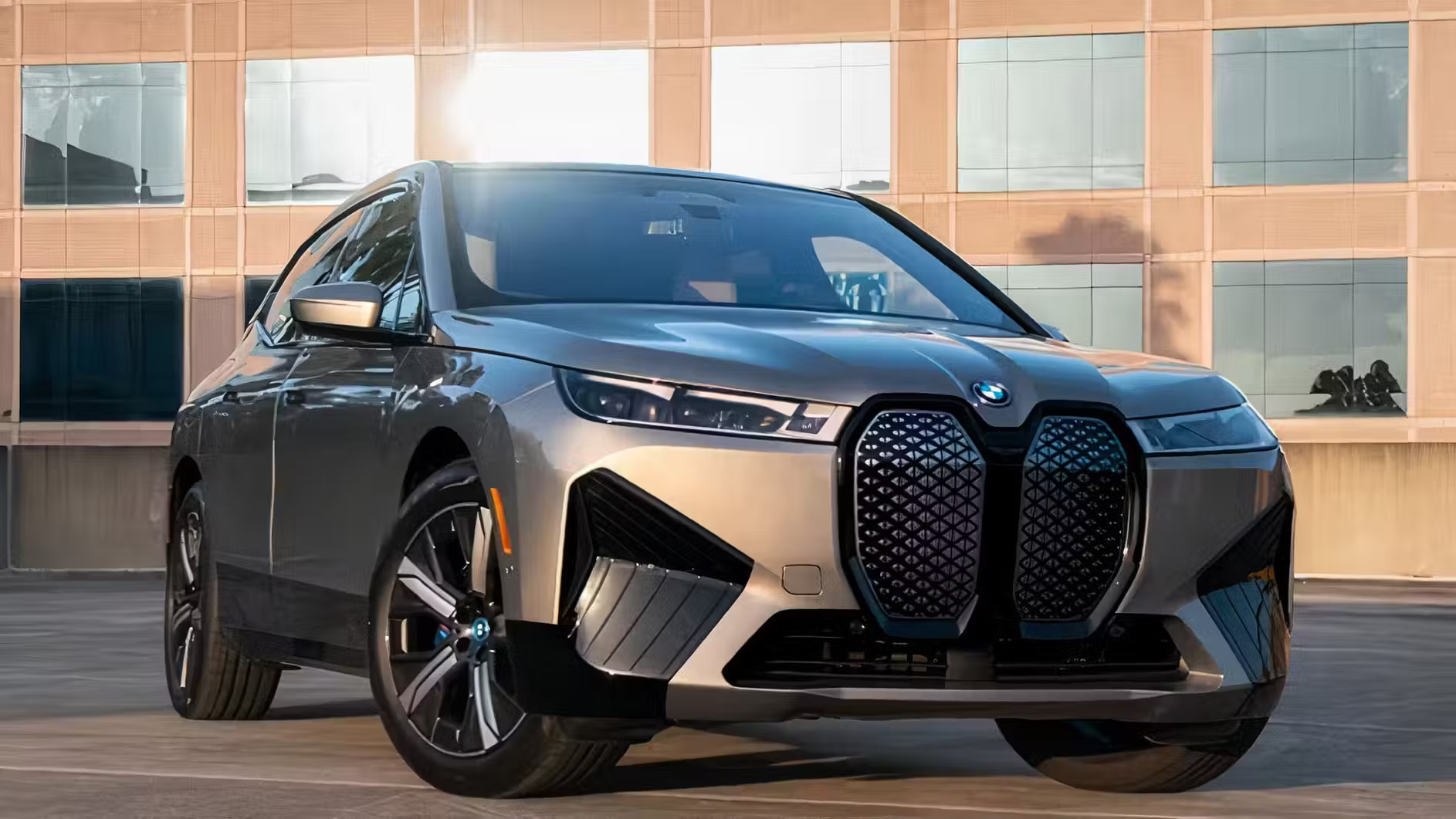
One of the most impressive aspects of the iX M60’s torque delivery is its integration with BMW’s xDrive all-wheel-drive system. The torque distribution between front and rear axles is continuously variable and can be adjusted based on driving mode, road conditions, and performance requirements.
This system can send up to 100% of available torque to either axle, providing optimal traction and handling characteristics. The M Adaptive suspension works in harmony with the torque delivery system to optimize both performance and comfort.
During aggressive acceleration, the suspension automatically adjusts damping rates and ride height to maintain optimal weight distribution and traction. This integration ensures that the full torque potential can be utilized without compromising stability or control.
BMW has also implemented launch control in the iX M60, which optimizes torque delivery for maximum acceleration from a standstill. This system coordinates power delivery with traction control and suspension settings to achieve optimal launch performance while protecting the drivetrain components.
The result is repeatable, consistent acceleration that maximizes the vehicle’s performance potential. The battery technology in the iX M60 uses BMW’s fifth-generation eDrive system, which includes advanced thermal management and optimized cell chemistry.
The 105.2 kWh battery pack can sustain high discharge rates without significant power loss, ensuring consistent torque delivery even during extended performance driving sessions.
The iX M60’s torque delivery also benefits from BMW’s extensive motorsport experience. The calibration includes lessons learned from BMW’s involvement in Formula E and other racing series, incorporating techniques for optimal power delivery and energy management. This racing-derived technology enhances both performance and efficiency.
The integration of the torque delivery with BMW’s driving assistance systems creates a safer and more confident driving experience. The system can modulate power delivery to work with stability control and traction management systems, allowing more aggressive torque application while maintaining vehicle control and safety.
The iX M60 demonstrates BMW’s commitment to maintaining driving excitement in the electric age. The torque delivery feels distinctly BMW, with character and engagement that transcends mere acceleration numbers.
This approach proves that electric vehicles can deliver not just performance, but genuine driving pleasure that satisfies enthusiasts while embracing the future of mobility.
Also Read: 5 Trucks With Best OEM Navigation Maps And 5 Needing Updates
5. Audi RS e-tron GT
The Audi RS e-tron GT represents the culmination of Audi’s electric performance vision, delivering torque with the precision and sophistication that defines the RS brand.
Sharing its foundation with the Porsche Taycan Turbo S but wearing distinctly Audi character, the RS e-tron GT produces 637 horsepower and 612 lb-ft of torque, accelerating from 0-60 mph in just 3.1 seconds.
This isn’t merely fast, it’s fast with the refinement and composure that makes Audi’s flagship sedan a masterpiece of electric performance. The RS e-tron GT’s torque delivery philosophy emphasizes both immediate response and sustained power.
Unlike some electric vehicles that provide a brief burst of maximum torque before tapering off, the RS e-tron GT maintains strong torque delivery across a broad speed range.
This characteristic makes it exceptionally effective for both launch acceleration and high-speed overtaking maneuvers, providing confidence and capability in all driving situations.
Audi’s quattro all-wheel-drive system has been completely reimagined for electric power in the RS e-tron GT. The torque distribution between front and rear axles is continuously variable and can be adjusted instantaneously based on traction conditions and driving dynamics.
This system can send up to 100% of available torque to either axle, providing optimal grip and stability during acceleration while maintaining the characteristic quattro handling balance. The advanced torque vectoring system in the RS e-tron GT goes beyond simple front-to-rear distribution.
The system can brake individual wheels to create torque vectoring effects, helping to rotate the car through corners while maintaining maximum acceleration. This integration of torque delivery and handling dynamics creates a more engaging and capable driving experience.
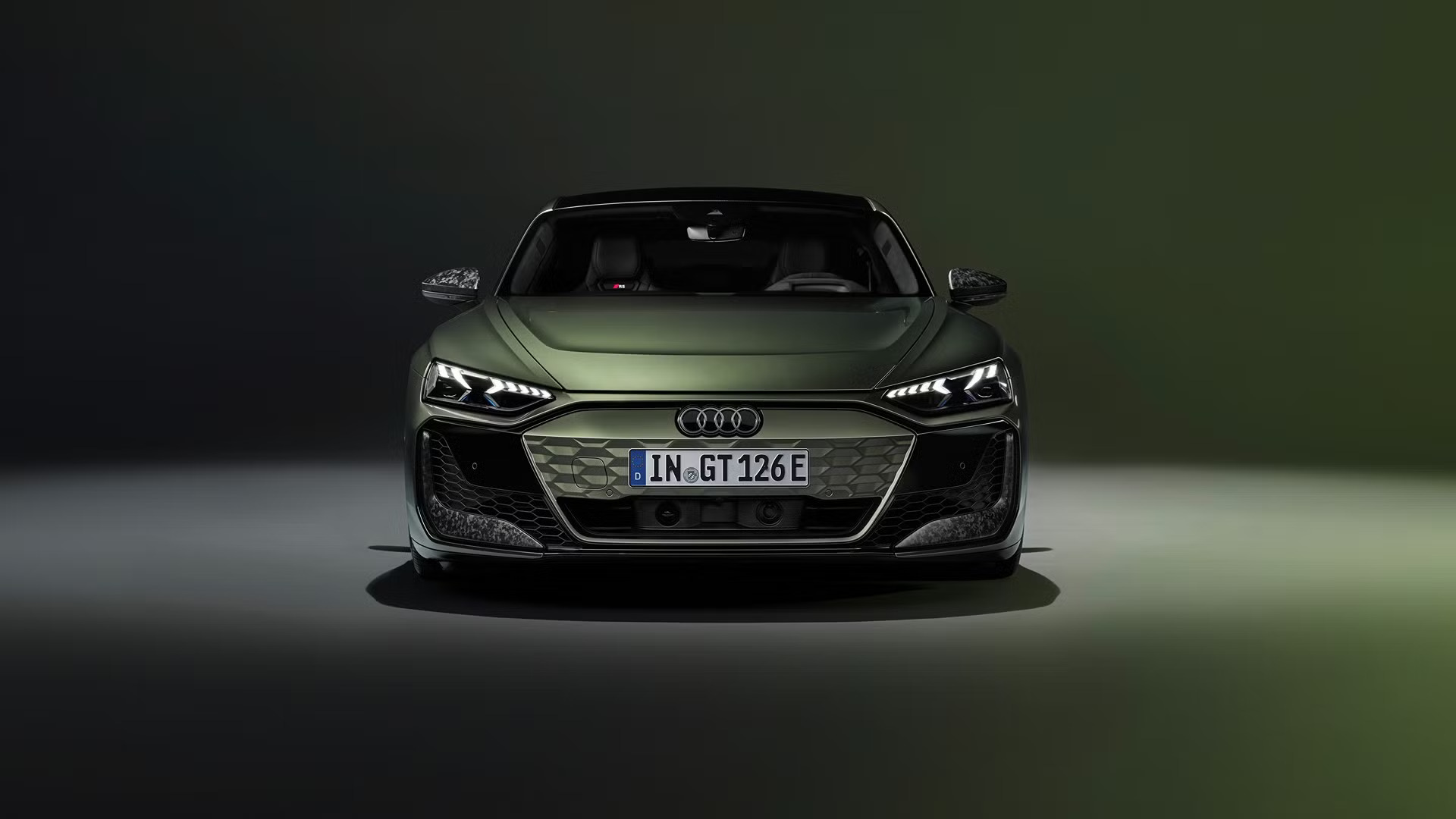
The RS e-tron GT’s torque delivery benefits from Audi’s advanced thermal management system, which maintains optimal operating temperatures for both motors and batteries.
This system includes heat pumps, liquid cooling, and sophisticated temperature monitoring that prevents thermal limiting during high-performance driving. The result is consistent torque delivery even during track sessions or repeated acceleration runs.
One of the most impressive aspects of the RS e-tron GT’s torque delivery is its refinement under all driving conditions. The power delivery feels seamless and progressive, building smoothly from standstill to maximum velocity without any harsh transitions or unexpected surges.
This refinement makes the tremendous performance accessible to drivers of all skill levels while still providing the engagement that enthusiasts demand. The 800-volt electrical architecture in the RS e-tron GT provides significant advantages for torque delivery.
The higher voltage allows for more efficient power transmission and reduces the current requirements for maximum power output. This efficiency translates to more consistent torque delivery and reduced thermal stress on electrical components.
Audi has implemented multiple drive modes in the RS e-tron GT that fundamentally alter the torque delivery characteristics. Efficiency mode provides smooth, economical power delivery optimized for range.
Comfort mode balances performance and refinement for daily driving. Dynamic mode sharpens throttle response and increases available torque, while RS mode unleashes the full performance potential with the most aggressive torque delivery calibration.
The RS e-tron GT’s torque delivery also integrates seamlessly with Audi’s advanced driver assistance systems. The adaptive cruise control and lane-keeping systems work with the torque delivery to provide smooth, natural acceleration and deceleration that feels more human-like than robotic.
This integration enhances both comfort and safety during highway driving. The psychological impact of the RS e-tron GT’s torque delivery cannot be understated.
The combination of immediate response, sustained power, and refined delivery creates an addictive driving experience that encourages frequent use of the performance potential.
The torque delivery feels both effortless and exciting, providing the satisfaction of high performance without the stress or harshness that can characterize more aggressive calibrations.
The RS e-tron GT proves that electric performance can equal or exceed traditional internal combustion engines while adding refinement and sophistication that enhances the overall driving experience.
The torque delivery represents the perfect balance of power and polish, creating a vehicle that satisfies both performance enthusiasts and luxury buyers seeking the ultimate expression of electric mobility.
5 EVs with Notable Torque Lag
These sluggish electric vehicles suffer from delayed power delivery due to conservative motor programming and inadequate power management systems that create noticeable hesitation between accelerator input and actual torque output during normal driving operations.
Their problematic engineering includes restrictive thermal protection algorithms, limited inverter capacity, and cautious power delivery mapping that amplifies the response delays typically associated with overheating prevention or battery protection protocols.
From frustrating acceleration gaps during traffic merging to disappointing performance during spirited driving attempts, these electric drivetrains demand patience through inconsistent power delivery and reduced responsiveness.
Owners discover that while these EVs offer electric vehicle efficiency benefits, their torque delivery characteristics create a less engaging driving experience with noticeable power delays that diminish the expected instant-response advantage of electric motor technology.
1. MG ZS EV
The MG ZS EV represents one of the most significant examples of throttle lag in the current electric vehicle market, demonstrating that not all EVs deliver the instant torque response that has become synonymous with electric propulsion.
The ZS EV has a noticeable delay in applying power when the accelerator is pressed, an issue that’s commonly reported across online reviews. This characteristic makes the MG ZS EV feel surprisingly conventional despite its electric powertrain, with a throttle response that more closely resembles a traditional automatic transmission vehicle than a typical EV.
The throttle lag in the MG ZS EV appears to stem from conservative software calibration rather than hardware limitations. The single electric motor produces 141 horsepower and 353 Nm (260 lb-ft) of torque, figures that should provide adequate performance for a compact SUV.
However, the power delivery has been programmed with a noticeable delay that creates a disconnect between driver input and vehicle response. This delay can be particularly frustrating in urban driving situations where an immediate response is expected.
The root cause of the MG ZS EV’s throttle lag likely relates to the manufacturer’s prioritization of efficiency and battery life over performance. The conservative calibration may be intended to prevent excessive battery drain and extend the vehicle’s 200-mile range.
However, this approach compromises one of the fundamental advantages of electric propulsion, the ability to provide immediate torque response.
The throttle lag becomes particularly noticeable during stop-and-go traffic situations where drivers expect an immediate response from the accelerator.
The delay can create hesitation during pulling away from traffic lights or when attempting to merge into traffic, requiring drivers to anticipate their acceleration needs rather than responding instinctively.
This characteristic fundamentally changes the driving experience and can be particularly challenging for drivers transitioning from internal combustion vehicles.
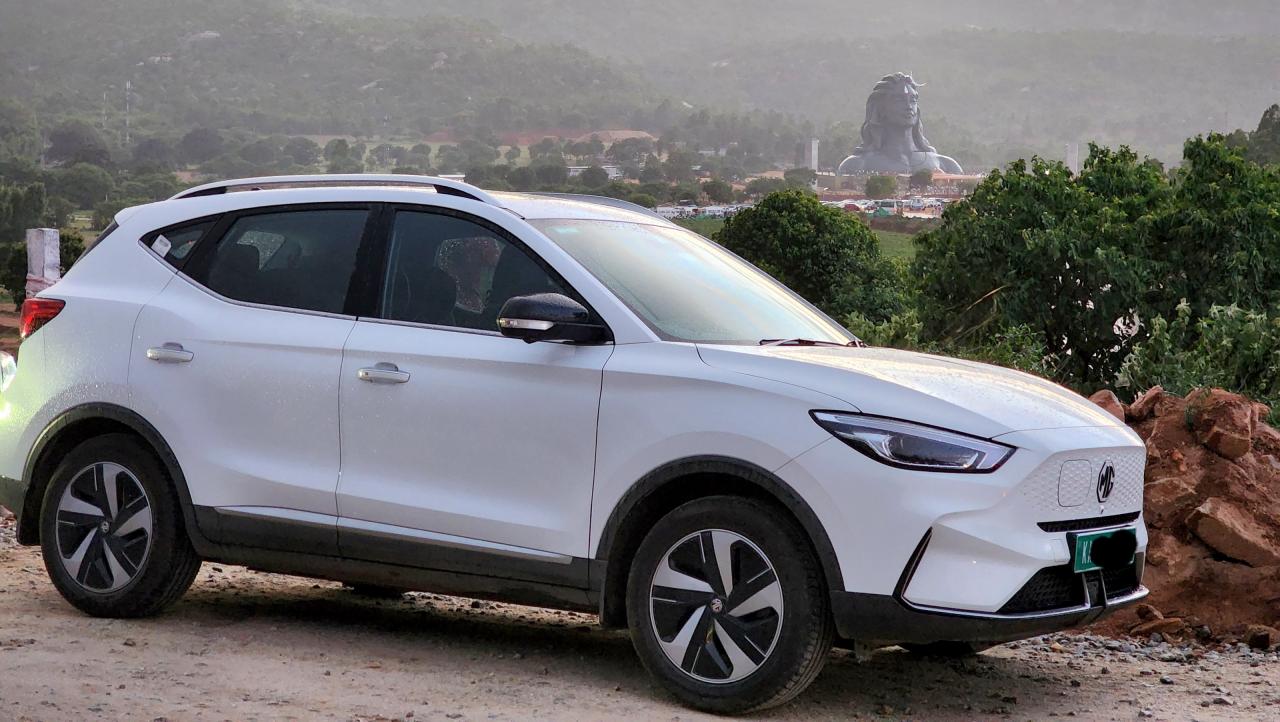
The MG ZS EV’s throttle lag also affects overtaking confidence on highways and dual carriageways. When attempting to pass slower vehicles, the delay in power delivery can create uncertainty about the vehicle’s ability to complete the maneuver safely.
This hesitation can be dangerous in situations where immediate acceleration is required for safety. Despite the throttle lag, the MG ZS EV does eventually deliver its available torque once the system responds.
The acceleration, while delayed, is adequate for most driving situations. However, the initial hesitation creates a driving experience that feels less refined and responsive than competitors in the same price range.
The software-based nature of the throttle lag suggests that it could potentially be addressed through updates or recalibration. However, MG has not indicated any plans to modify the current power delivery characteristics, suggesting that the conservative approach is intentional rather than an oversight.
The MG ZS EV’s throttle lag represents a missed opportunity to showcase the advantages of electric propulsion. While the vehicle offers good value and practical features, the delayed throttle response undermines the driving experience and fails to deliver the instant gratification that many buyers expect from electric vehicles.
The impact of the throttle lag extends beyond mere performance concerns. The delayed response creates a less engaging driving experience that can make the vehicle feel sluggish and unresponsive, despite adequate power output.
This characteristic may discourage some buyers from considering electric vehicles if they assume all EVs share similar throttle response issues. The MG ZS EV demonstrates that electric vehicles are not automatically superior in terms of throttle response.
The software calibration and system integration play crucial roles in determining the actual driving experience, and conservative programming can negate the inherent advantages of electric propulsion.
This example highlights the importance of test driving electric vehicles to evaluate their actual performance characteristics rather than assuming instant torque delivery.
2. Nissan Ariya
The Nissan Ariya, while generally well-regarded for its comfort and refinement, exhibits a surprisingly subdued torque delivery that prioritizes smoothness over immediate response.
Unlike many modern EVs that deliver their power with aggressive immediacy, the Ariya’s calibration emphasizes progressive power buildup that can feel laggy compared to more responsive electric vehicles.
This characteristic aligns with Nissan’s traditional approach to vehicle tuning, which has historically favored comfort and ease of driving over outright performance.
The Ariya’s torque delivery philosophy appears to prioritize passenger comfort and energy efficiency over driving excitement. The single-motor front-wheel-drive model produces 214 horsepower and 221 lb-ft of torque, while the dual-motor all-wheel-drive variant increases output to 389 horsepower and 442 lb-ft of torque.
However, regardless of configuration, the power delivery feels deliberately muted, with a progressive buildup that lacks the immediate punch associated with many electric vehicles.
The conservative calibration of the Ariya’s torque delivery may be intentional, designed to appeal to buyers who prioritize comfort over performance.
Nissan has positioned the Ariya as a premium family SUV rather than a performance vehicle, and the smooth power delivery aligns with this market positioning.
However, this approach can disappoint drivers expecting the instant torque response that has become a defining characteristic of electric vehicles.
The Ariya’s torque delivery is further influenced by its CVT-like programming that creates a familiar driving experience for traditional vehicle owners.
While technically unnecessary in an electric vehicle, this calibration approach may be intended to ease the transition for buyers new to electric propulsion. However, it also eliminates much of the excitement and immediacy that characterizes well-tuned electric vehicles.
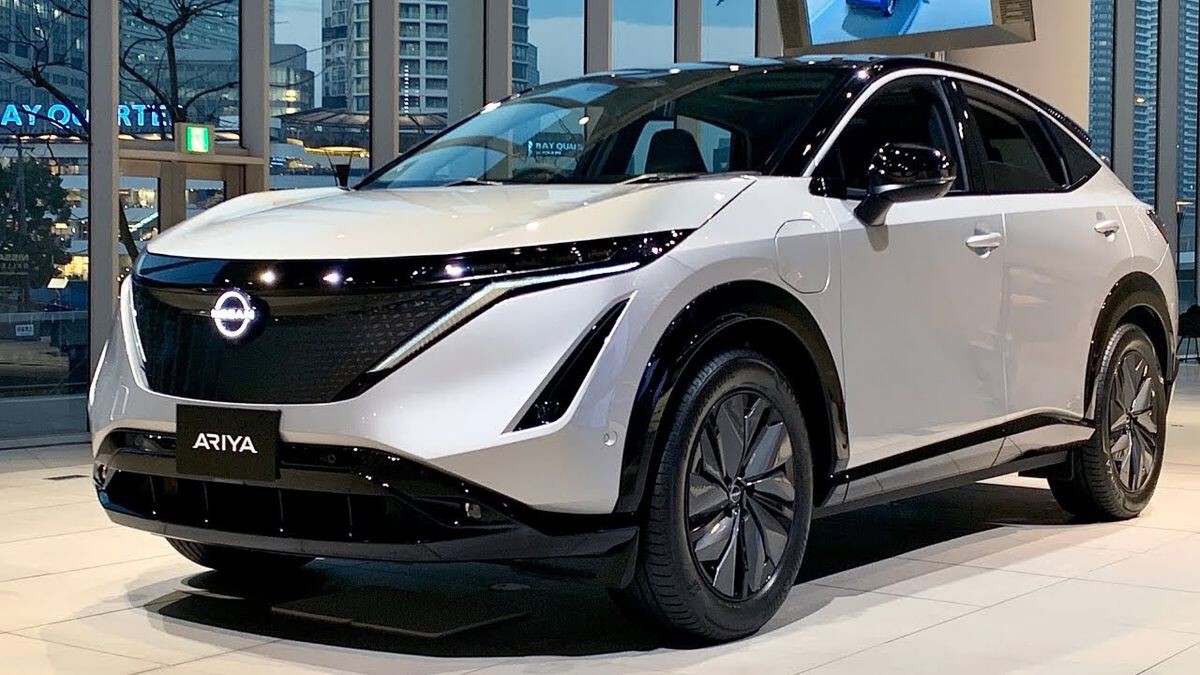
The all-wheel-drive Ariya’s torque distribution system adds another layer of complexity to the power delivery. The system can vary torque between front and rear axles, but the transitions are so smooth that they’re barely perceptible.
While this refinement contributes to the vehicle’s composed handling, it also reduces the sense of engagement and excitement that more dynamic torque vectoring systems provide.
The Ariya’s battery management system may also contribute to the conservative torque delivery. The vehicle’s thermal management prioritizes battery longevity and consistent performance over maximum power output.
This approach can result in power limiting during extreme conditions or aggressive driving, further reducing the available torque and creating a less engaging driving experience.
Despite its conservative torque delivery, the Ariya does provide adequate performance for most driving situations. The dual-motor variant can accelerate from 0-60 mph in approximately 5.1 seconds, which is respectable for a family SUV.
However, the progressive power delivery makes the vehicle feel slower than its acceleration times suggest, reducing the sense of capability and excitement.
The Ariya’s torque delivery also varies significantly between drive modes, with Sport mode providing noticeably sharper response than the default settings.
However, even in its most aggressive setting, the Ariya maintains a level of restraint that prevents it from delivering the immediate, exciting torque response that characterizes many competitors.
The refinement-focused approach of the Ariya’s torque delivery may appeal to buyers who prioritize comfort and smoothness over performance. The progressive power buildup creates a serene driving experience that never feels harsh or abrupt.
However, this characteristic may disappoint buyers expecting the instant gratification that electric propulsion can provide.vThe Nissan Ariya demonstrates that manufacturers can choose to prioritize different characteristics in their electric vehicles, even when the underlying technology supports more aggressive calibration.
While the conservative torque delivery may align with Nissan’s comfort-focused philosophy, it also represents a missed opportunity to showcase the exciting potential of electric propulsion.
3. Volkswagen ID.4
The Volkswagen ID.4 exhibits a measured approach to torque delivery that prioritizes predictability and efficiency over immediate response. While the vehicle’s single electric motor produces 201 horsepower and 229 lb-ft of torque, the power delivery feels deliberately restrained, with a progressive buildup that can feel laggy compared to more aggressive electric vehicles.
This characteristic reflects Volkswagen’s traditional engineering philosophy, which emphasizes refinement and efficiency over outright performance. Volkswagen’s calibration of the ID.4’s torque delivery appears to prioritize battery efficiency and range optimization over driving excitement.
The conservative power mapping likely contributes to the vehicle’s impressive EPA-estimated range of up to 275 miles, but it also creates a driving experience that lacks the immediate thrust associated with many electric vehicles.
The torque delivery feels more like a traditional turbocharged engine than a typical EV, with a noticeable delay between throttle input and maximum power output.
The ID.4’s drive modes provide some variation in torque delivery characteristics, but even the Sport mode maintains a level of restraint that prevents truly aggressive acceleration.
The Eco mode further reduces available torque and implements even more conservative power delivery to maximize range, creating a driving experience that can feel sluggish and unresponsive in demanding situations.
The vehicle’s sophisticated battery management system contributes to the conservative torque delivery by monitoring cell temperatures and state of charge to prevent damage or degradation.
While this approach enhances battery longevity and reliability, it can also result in power limiting during aggressive driving or extreme weather conditions, further reducing the available torque and creating inconsistent performance.
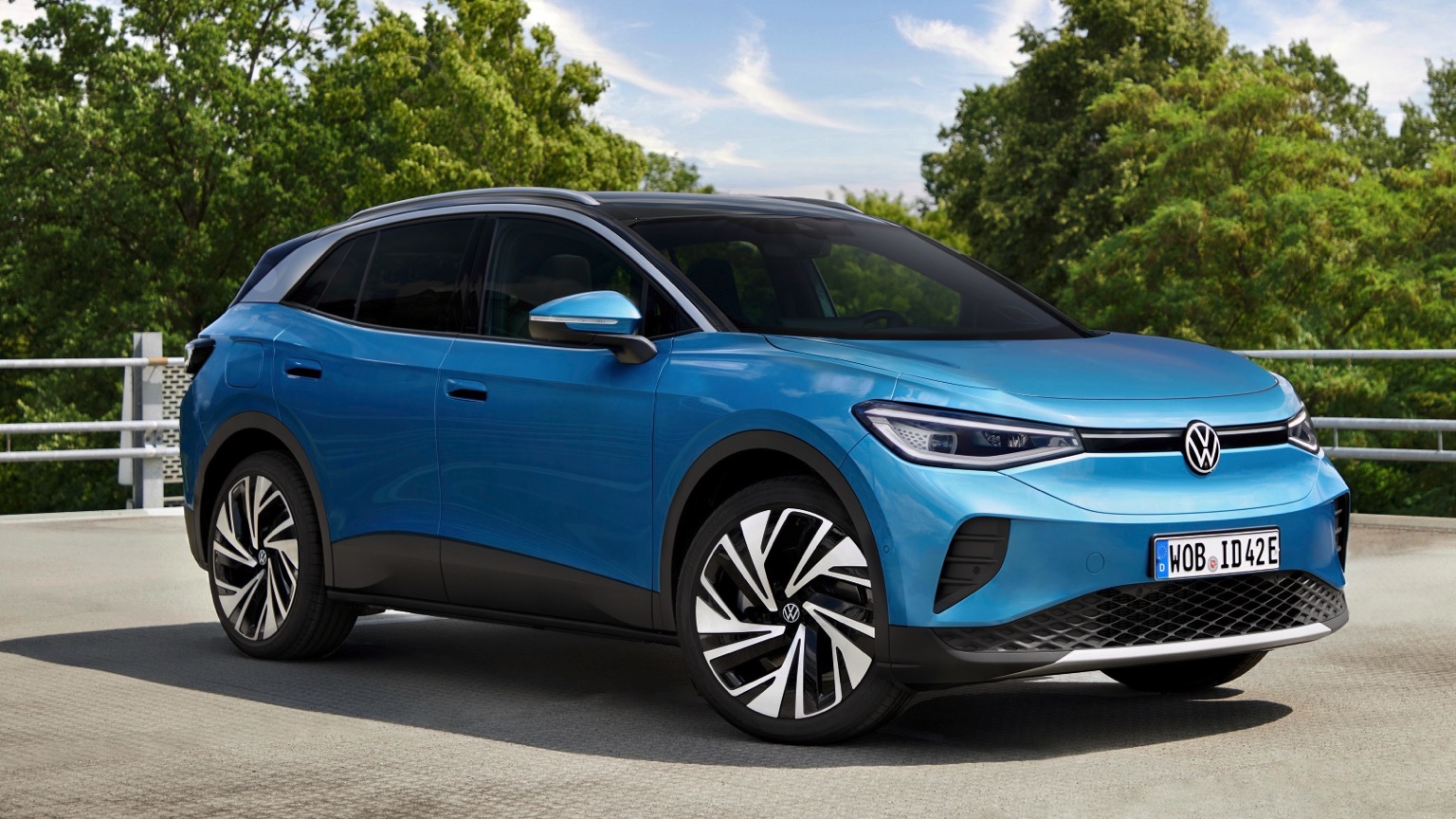
One of the most noticeable aspects of the ID.4’s torque delivery is its linear, predictable character. Unlike some electric vehicles that provide a sudden surge of power, the ID.4’s torque builds gradually and smoothly, creating a driving experience that feels more conventional than revolutionary.
This characteristic may appeal to buyers transitioning from traditional vehicles, but it can disappoint those expecting the instant gratification of electric propulsion.
The ID.4’s single-motor configuration also contributes to its conservative torque delivery. Without the complexity of dual motors or torque vectoring, the vehicle relies on traction control and stability systems to manage power delivery.
These systems tend to be conservative in their operation, reducing available torque when wheel slip is detected or anticipated. The thermal management system in the ID.4 prioritizes component longevity over maximum performance, which can result in torque limiting during sustained high-power operation.
While this approach protects the drivetrain and battery, it also creates a less engaging driving experience that may disappoint performance-oriented buyers. Despite its conservative torque delivery, the ID.4 provides adequate performance for most driving situations.
The 0-60 mph acceleration time of approximately 7.5 seconds is reasonable for a family SUV, though the progressive power delivery makes the vehicle feel slower than its specifications suggest. The torque delivery is particularly noticeable during highway merging or overtaking situations, where immediate response is often desired.
The ID.4’s torque delivery philosophy reflects Volkswagen’s focus on creating a mass-market electric vehicle that appeals to mainstream buyers rather than performance enthusiasts.
The conservative calibration prioritizes comfort, efficiency, and familiarity over excitement, creating a vehicle that serves as a practical introduction to electric mobility rather than a showcase of EV performance potential.
The ID.4 demonstrates that electric vehicles can be calibrated to provide very different driving experiences, even with similar hardware specifications.
Volkswagen’s choice to prioritize efficiency and refinement over aggressive torque delivery creates a vehicle that may appeal to some buyers while disappointing others who expect more immediate response from electric propulsion.
4. Hyundai Kona Electric
The Hyundai Kona Electric presents an interesting case study in torque delivery calibration, where the pursuit of maximum efficiency and range has resulted in a notably conservative power delivery system.
Despite featuring a 201-horsepower electric motor with 291 lb-ft of torque, the Kona Electric’s actual driving experience feels significantly more restrained than these specifications suggest.
The torque delivery has been carefully calibrated to prioritize the vehicle’s impressive 258-mile EPA range rating, but this focus on efficiency comes at the cost of the immediate, engaging power delivery that characterizes many other electric vehicles.
The Kona Electric’s torque delivery system appears to be programmed with multiple layers of power limiting and thermal management that create a noticeable lag between driver input and peak power output.
This conservative approach likely stems from Hyundai’s decision to prioritize battery longevity and consistent performance across varying temperature conditions.
The thermal management system is particularly aggressive, reducing available torque when battery or motor temperatures approach predetermined limits.
One of the most noticeable characteristics of the Kona Electric’s torque delivery is its progressive nature, which builds power gradually rather than delivering immediate maximum torque.
This programming creates a driving experience that feels more like a traditional automatic transmission vehicle than a typical electric car. The delay is particularly evident during initial acceleration from a standstill, where the vehicle takes a moment to build power rather than providing instant thrust.
The Kona Electric’s battery management system plays a significant role in the conservative torque delivery. The 64 kWh battery pack is programmed with extensive protection protocols that limit power output under various conditions, including low temperatures, high temperatures, low state of charge, and high state of charge.
These protections ensure battery longevity but create inconsistent power delivery that can be frustrating for drivers expecting reliable performance.
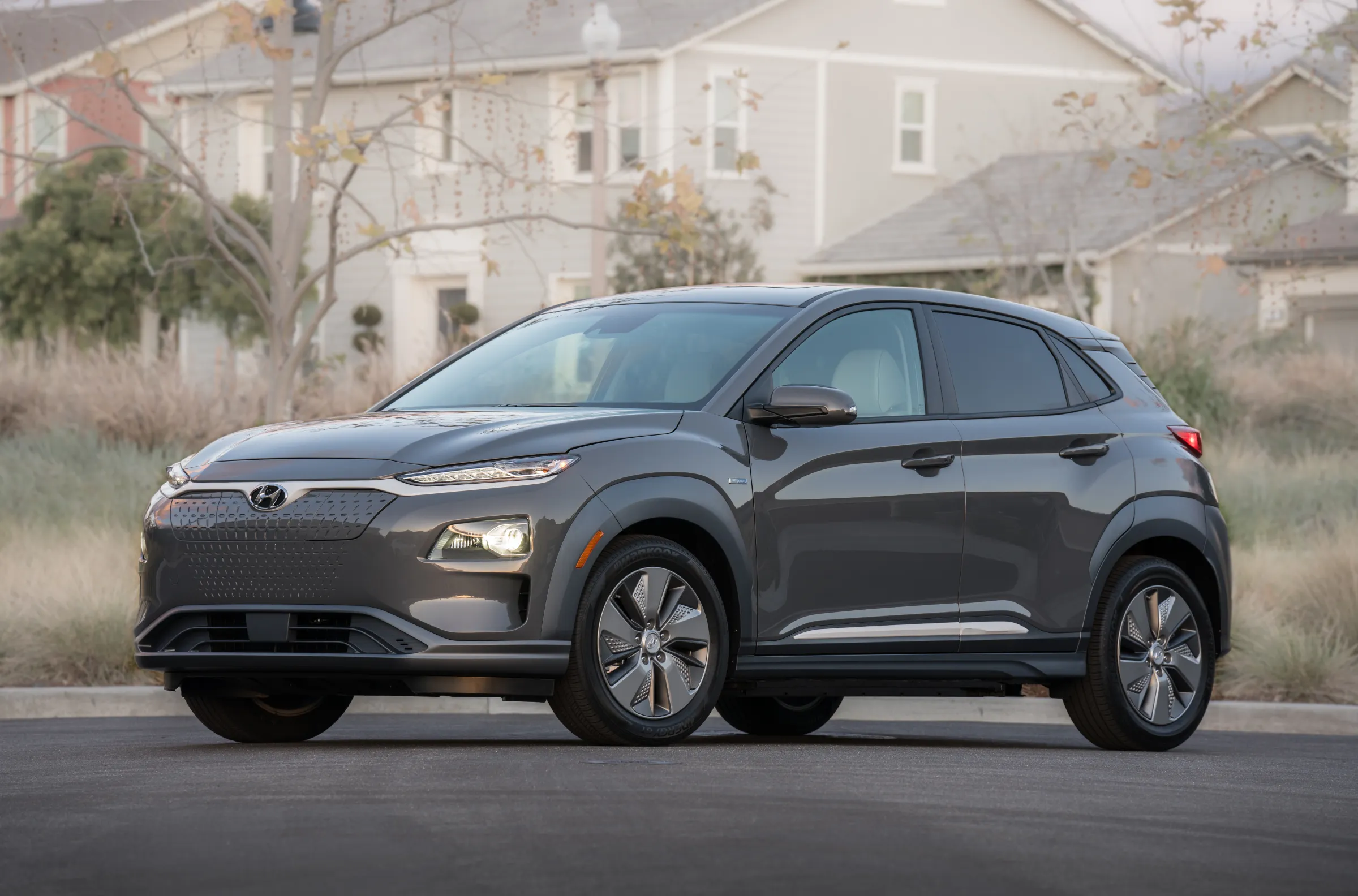
The vehicle’s single-motor front-wheel-drive configuration contributes to the conservative torque delivery, as the traction control system must manage all power through the front wheels.
This system tends to be cautious in its operation, reducing torque at the first sign of wheel slip or loss of traction. The result is a power delivery system that prioritizes safety and control over maximum performance.
Drive mode selection in the Kona Electric provides some variation in torque delivery characteristics, but the differences are less pronounced than in many competing vehicles.
Even the Sport mode maintains a level of restraint that prevents truly aggressive acceleration, while the Eco mode implements even more conservative power limiting to maximize range. The Normal mode strikes a balance but still feels notably subdued compared to other electric vehicles in the same class.
The Kona Electric’s torque delivery is also affected by its regenerative braking system, which can create a confusing pedal feel that impacts the overall driving experience.
The transition between regenerative braking and motor torque isn’t always seamless, creating a less refined feel than some competitors. This characteristic can make the vehicle feel less responsive and predictable during normal driving conditions.
Despite these limitations, the Kona Electric does provide adequate performance for most driving situations, with a 0-60 mph time of approximately 6.4 seconds.
However, the conservative torque delivery makes the vehicle feel slower than its specifications suggest, particularly during real-world driving scenarios like highway merging or overtaking slower traffic.
The thermal management system’s impact on torque delivery becomes particularly noticeable during extended highway driving or in extreme weather conditions.
The system may reduce available power to protect components, creating inconsistent performance that can be frustrating for drivers who expect reliable acceleration regardless of conditions.
The Kona Electric’s approach to torque delivery reflects Hyundai’s priority of creating a practical, efficient electric vehicle rather than a performance-focused machine.
While this conservative calibration helps achieve impressive range and reliability, it also represents a departure from the immediate, engaging power delivery that has become one of the defining advantages of electric propulsion.
5. Chevrolet Bolt EV
The Chevrolet Bolt EV, despite being one of the more affordable and accessible electric vehicles on the market, exhibits a surprisingly restrained torque delivery that prioritizes smoothness and efficiency over the immediate thrust typically associated with electric propulsion.
With a single electric motor producing 200 horsepower and 266 lb-ft of torque, the Bolt EV should theoretically provide spirited acceleration, but the actual driving experience reveals a deliberately conservative power delivery system that builds torque gradually rather than delivering it instantaneously.
The Bolt EV’s torque delivery philosophy appears to be heavily influenced by General Motors’ desire to create a mainstream electric vehicle that feels familiar and non-threatening to traditional car buyers.
The power delivery has been calibrated to feel progressive and linear, similar to a conventional automatic transmission vehicle, rather than providing the immediate, sometimes startling acceleration that characterizes many electric vehicles.
This approach may ease the transition for buyers new to electric vehicles, but it also eliminates much of the excitement and engagement that electric propulsion can provide.
One of the most noticeable aspects of the Bolt EV’s torque delivery is the deliberate delay between throttle input and peak power output. This characteristic is particularly evident during initial acceleration from a standstill, where the vehicle takes a moment to build power rather than providing instant maximum torque.
The delay creates a driving experience that feels more conventional than revolutionary, missing the opportunity to showcase one of electric propulsion’s most compelling advantages.
The Bolt EV’s single-motor front-wheel-drive configuration contributes to its conservative torque delivery, as the traction control system must manage all power through the front wheels.
This system appears to be programmed very conservatively, reducing torque at the slightest hint of wheel slip or traction loss. While this approach enhances safety and predictability, it also limits the vehicle’s ability to deliver its full performance potential, particularly in challenging driving conditions.
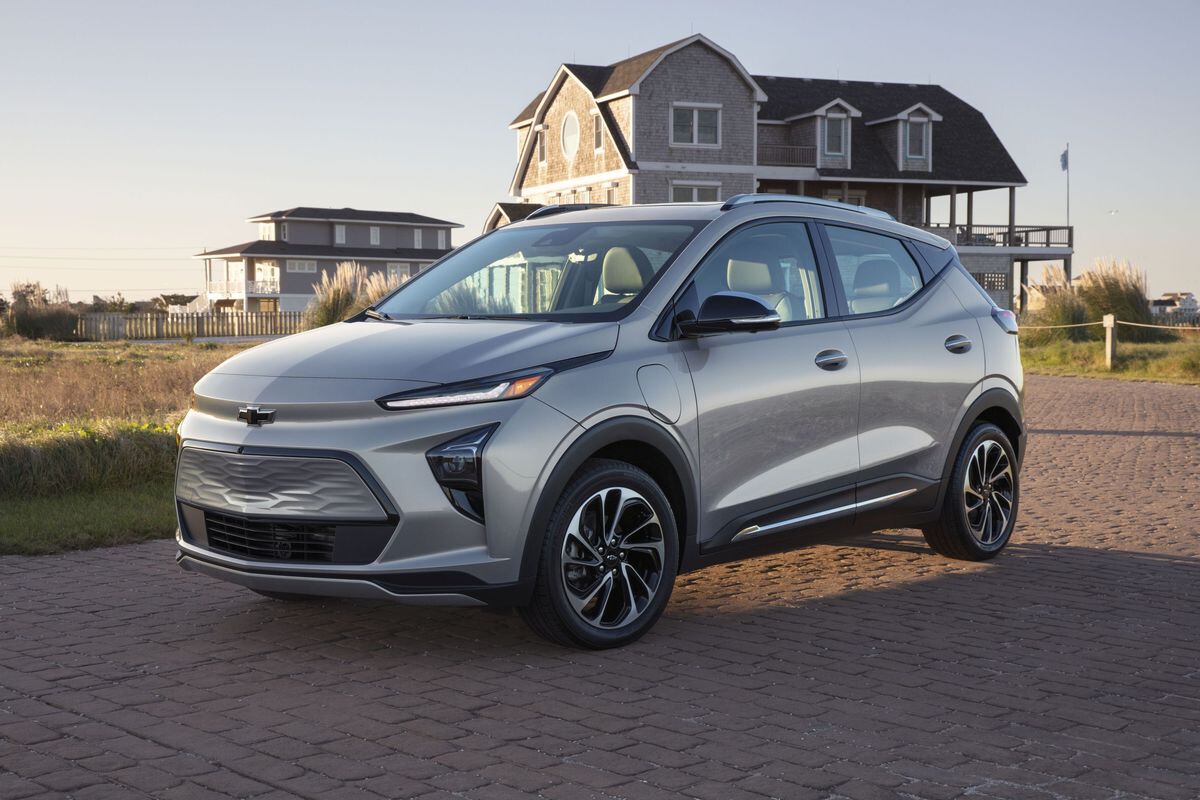
The battery management system in the Bolt EV plays a significant role in the conservative torque delivery characteristics. The 65 kWh battery pack (in the EV model) is programmed with extensive protection protocols that limit power output under various conditions, including temperature extremes, low state of charge, and high state of charge.
These protections ensure battery longevity and reliability, but create inconsistent power delivery that can frustrate drivers expecting reliable performance.
The thermal management system in the Bolt EV is particularly conservative, implementing power limiting well before components reach critical temperatures.
This approach protects the motor and battery from damage, but can result in reduced torque delivery during sustained high-power operation or in extreme weather conditions.
The power limiting can be particularly noticeable during highway driving in hot weather, where the system may reduce available torque to prevent overheating. Drive mode selection in the Bolt EV provides minimal variation in torque delivery characteristics.
The Sport mode does sharpen throttle response slightly, but the difference is subtle compared to the dramatic changes available in many competing vehicles. The Eco mode implements even more conservative power limiting, creating a driving experience that can feel sluggish and unresponsive in demanding situations.
The Bolt EV’s regenerative braking system also impacts the overall torque delivery experience. The transition between regenerative braking and motor torque isn’t always seamless, creating a less refined pedal feel that can make the vehicle feel less responsive and predictable.
This characteristic is particularly noticeable during stop-and-go driving, where smooth transitions between braking and acceleration are important for driver confidence.
Despite its conservative calibration, the Bolt EV does provide adequate performance for most driving situations, with a 0-60 mph time of approximately 6.5 seconds.
However, the gradual torque delivery makes the vehicle feel significantly slower than its specifications suggest, particularly during real-world driving scenarios that require immediate acceleration response.
The Bolt EV’s approach to torque delivery reflects General Motors’ strategy of creating an accessible, non-intimidating electric vehicle that appeals to mainstream buyers rather than performance enthusiasts.
While this conservative calibration may successfully introduce traditional car buyers to electric mobility, it also represents a missed opportunity to demonstrate the engaging, exciting potential of electric propulsion.
The torque delivery characteristics of the Bolt EV demonstrate that electric vehicles can be programmed to feel very different from one another, even with similar hardware specifications.
General Motors’ choice to prioritize familiarity and efficiency over immediate response creates a vehicle that serves as a practical introduction to electric driving rather than a showcase of EV performance capabilities.
The Bolt EV’s gradual torque delivery, while potentially appealing to some buyers seeking a gentle introduction to electric vehicles, ultimately underdelivers on the promise of electric propulsion.
The conservative programming eliminates much of the excitement and engagement that makes electric vehicles compelling, creating a driving experience that feels more like a traditional economy car than a glimpse into the future of automotive technology.
Also Read: 5 EVs with the Best Charging Port Locations and 5 with the Most Awkward

